Hold On With Vacuum Clamping
Because of the possibility of workpiece deformation, clamping using three-jaw chucks is not always suitable for final machining. In cases where tight machining tolerances must be upheld, this Danish cutting specialist relies on vacuum clamping technology to hold its parts.
Since the company’s founding in 1969, Madsen Machine Technology (Horsens, Denmark) has specialized in turning removal of deep-drawn and rolled parts in metal, including stainless steel. Such parts are relatively thin-walled and exhibit particularly high material tension because of their manufacturing process. A certain level of knowledge and expertise is needed to control forces that arise during milling and machining of finished products with tight tolerances. Through the years, Madsen has become known for specializing in turning such difficult parts, even to the point that renowned companies from Scandinavia, England and Germany enlist the company’s service.
Morten Helding Madsen, who runs the company together with his brother Claus Helding Madsen, explains: “We have here near our main plant in Horsens a partner company called Oestergard, which co-owns 40 percent of our company. Oestergard lets us do fine turning of many deep-drawn turned parts ourselves, but more than 70 percent of our turnover goes to export. We mainly export turned parts for automotive, medical and pump industries.” The situation with incoming orders is so good that 15,000 square feet of space available for production is no longer enough. By the end of 2007, Madsen plans to increase its machining facilities by 50 percent.
One of the contributing factors to the company’s growth has been the considerable number of special orders it has received. For example, an automotive supplier has ordered 100,000 dampers per year, supplied as rolled, semi-finished products. These dampers weigh about 18 pounds and have an OD of approximately 13 inches. It is Madsen’s job to not only machine the reverse flange inside and out, but also to carry out milling of the face ends. Tight dimension and position tolerances are required. Before this job, the company found that three-jaw chucks were sufficient for part clamping, but this method met its limits for the dampers. Mr. Madsen describes the problem: “For face milling on one end we can clamp the flange on the ID using a three-jaw chuck. But for the other end, the part is too big. Also, the surface would become convex because of the tension, and we could not maintain the required tolerances.”
So the cutting specialists went in search of alternative clamping methods. Tests with magnetic chucks did not produce the desired results because of the accumulation of iron chips. During discussions with the company’s machine supplier, Gildemeister, the idea arose to try a vacuum chuck from Witte (Bleckede, Germany). Vacuum would allow an even and tension-free part clamping process.
According to Mr. Madsen, “The people at Gildemeister talked favorably about their positive experience with Witte as their partner, which is why we were happily prepared to go for an innovative solution. Already, initial tests have shown that our skepticism regarding holding forces was unfounded. We machined these parts with approximately 2,000 rpm and clamping was 100-percent reliable. I am convinced that we could machine even larger parts with the Witte vacuum chuck.” He also emphasizes that being able to easily clean the system with compressed air or water gives it another significant advantage over magnetic alternatives.
Vacuum systems are available in different versions, designed to address the needs of particular clamping applications. The principle setup, though, is always the same: Vacuum conditions are generated via a modular vacuum unit with an integrated liquid separator, vacuum tank and pressure controller. Vacuum distributors channel operating vacuum to the chucks. Gages, manual or magnetic valves, pressure controllers and safety switches take care of monitoring the process.
For applications on turning machines, circular vacuum chucks are the best option. Witte offers a range from 100 mm (4 inches) to 630 mm (25 inches) in diameter, with custom solutions for larger or smaller parts. Circular chucks allow fixation of parts with different size inner and outer diameters. Freely adjustable stops ensure accurate positioning of workpieces.
Madsen is now using four such chucks from Witte. Two are permanently installed on Gildemeister CTX 420 linear universal turning machines. These machines are used exclusively for manufacture of the previously mentioned dampers. The third system is mounted when required on a CTX 400 to turn a lid insert that is required in smaller quantities. Changing the chucks is a fast process. Mr. Madsen states that setting up a vacuum on a machine takes less than 2 hours.
The 30 employees at Madsen consider it important to keep an eye open for innovations that will optimize quality, price and delivery time for their products. For Mr. Madsen, the vacuum workholding systems are an important component of his modern machinery: “Without this vacuum clamping system, we could not machine these dampers to the required tolerances without taking a lot more time. Also, the support from the supplier during installation of the system was excellent. Their know-how with regard to vacuum clamping technology was invaluable.”
For the additional production space, Madsen has already ordered four more Gildemeister machines. “These can be equipped with vacuum chucks for corresponding orders,” Mr. Madsen adds. A further innovative step is currently in the planning process. In the future, a robot arm will load one or more machines. Mr. Madsen explains, “We want to relieve our staff of simple, heavy work so they can do more important work, such as quality control.”
Vacuum Clamping Advantages
- Reduced clamping time
- Universal clamping system for different parts
- Clamping of non-magnetic parts
- Oscillation-free machining
- Clamping of thin parts and foils without deformation
- Problem-free machining of contours and cutouts
- Broad range of machining and materials applications
Related Content
The Ins and Outs of Inserts
Understanding how inserts are made provides valuable insight into how their performance can be optimized.
Read MoreThe Value of Tool Monitoring on Rotary Transfer Machines
By using a tool monitoring system, shops can save costs associated with machine maintenance and downtime for tool changes while increasing cutting performance.
Read MoreAutomation Breakthroughs Revolutionize Precision Machining for Complex Parts
Marubeni Citizen-Cincom delivers custom solutions to address some of the biggest challenges in precision machining from handling small parts, to robot integration and unique tooling needs.
Read MoreData Matrix Codes Offer Cutting Tool Traceability
A company’s quest to discover errors in a manufacturing process has led to printing data matrix codes on its cutting tools that provide a wealth of information for both the user and this cutting tool manufacturer.
Read MoreRead Next
Do You Have Single Points of Failure?
Plans need to be in place before a catastrophic event occurs.
Read MoreEmerging Leaders Nominations Now Open
Here’s your chance to highlight a young person in your manufacturing business who is on the path to be a future leader moving your company forward.
Read More




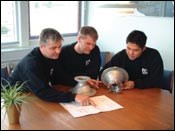
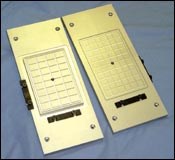

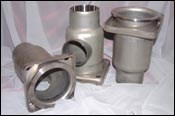
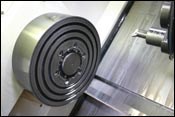
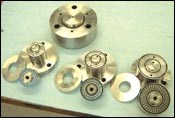




.jpg;maxWidth=300;quality=90)












